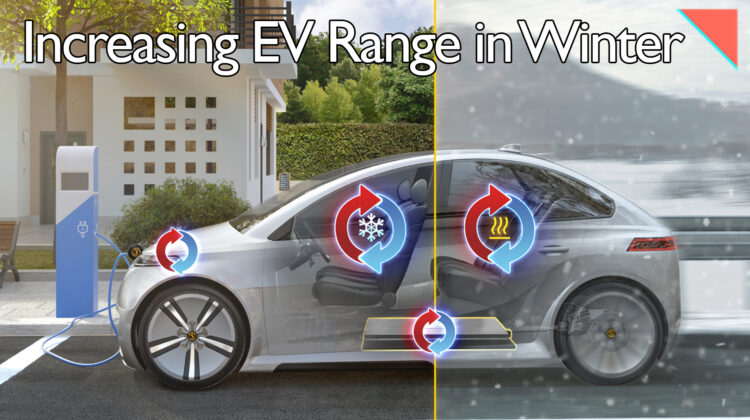
Follow us on social media:
Runtime: 8:33
0:34 Flooding Halts Honda Production in Mexico
1:06 Continental Increasing EV Range in Winter
1:44 Tesla’s Unique Approach to Increasing Deliveries
2:40 PPG Develops Low-Cure Paint Process
3:42 Hyundai Working on Spark/Compression Ignition Engine
4:18 Mercedes to Export GLC to U.S. from India
5:25 Why GM Axed the Saturn Sky & Pontiac Solstice
Visit our sponsors to thank them for their support of Autoline Daily: Bridgestone , Dow Automotive Systems , Lear Corporation , and ExxonMobil.
On today’s show… the Department of Energy awards Hyundai with a grant to develop a spark/compression ignition engine… PPG creates a new process to reduce energy consumption when painting vehicles… and Bob Lutz explains what led to the demise of the Pontiac Solstice and Saturn Sky. All that and more coming right up on Autoline Daily.
This is Autoline Daily the voice of the automotive industry.
FLOODING HALTS HONDA PRODUCTION IN MEXICO
Due to flooding in the area of Honda’s plant in Celaya, Mexico, the company has been forced to suspend production of the Fit and HR-V. AutoForecast Solutions reports that production of the models will resume in November. According to WardsAuto data, Honda only had 34 days supply of the Fit at the end of August. So it won’t be easy to find one of those in stock until production resumes. But the company is in better shape with HR-V, which has a healthier 55 days supply.
INCREASING EV RANGE IN WINTER
An EVs range can decrease as much as 40% in the winter when you factor in outside temperature as well as that energy needed to heat certain components and the cabin comes from the battery. But the supplier Continental has developed a new intelligent thermal management system that will help cut those losses. New Coolant Flow Control Valves are used to better manage heating and cooling to only the places where it’s needed. Continental says it’s feasible to increase the winter range of an electric vehicle by around 25% as well as speed up charging time when it’s hot out.
TESLA NOW BUILDING CAR CARRIERS
Last week Tesla admitted it was having trouble getting Model 3s into customer’s hands, but it’s going to unique lengths to fix that. Tesla has launched a door-to-door service, bringing vehicles directly to customers. Elon Musk also Tweeted out yesterday that Tesla has resorted to building its own car carriers to make deliveries. And once a new owner does get their car, it might just be a current Tesla customer who volunteered to educate them on their purchase.
Still to come… Mercedes plans to start exporting GLC’s built in India to the U.S.
PPG REDUCES PAINT SHOP ENERGY CONSUMPTION
It may surprise you to learn, the paint shop consumes nearly 70 percent of all energy at an automotive assembly plant. But paint supplier PPG has come up with a process that can cut paint shop energy consumption by up to 39%. It developed a specially formulated clear coat that cures at about 175-degrees Fahrenheit, instead of nearly 285-degrees like current systems. This makes it possible to bake carbon fiber and composite parts with the body of the vehicle, resulting in better color uniformity between pieces in addition to simplifying the manufacturing process. The new system can be used with existing equipment and the painting cycle and bake time is the same. OEMs could also reduce the physical footprint of their paint shop because fewer ovens are needed. Ferrari is the first automaker to adopt this low-cure paint technology.
HYUNDAI WORKING ON SPARK/COMPRESSION IGNITION
Billions are being invested in electric technology, but the internal combustion engine is not dead yet. Hyundai just received funding of nearly $5 million from the U.S. Department of Energy to conduct research and development on a new engine that would improve fuel economy and CO2 emissions. What makes this interesting is that Hyundai is looking to develop a spark/compression ignition engine, likely similar to Mazda’s SKYACTIV-X engine, to be used on its own as well as for plug-in and mild-hybrid vehicles.
MERCEDES TO START EXPORTING GLC FROM INDIA
Last year, Ford began importing EcoSport’s made in India to the U.S. And now another automaker will follow suit. Automotive News reports that Mercedes-Benz will export GLC’s built in India to the U.S. The crossover is currently made in Germany and there aren’t plans to build it at the company’s plant in Alabama. This is a bit of a risk for Mercedes. Not only is the GLC the best-selling luxury compact CUV in the U.S., it’s also the company’s number one vehicle in the country. It wouldn’t be surprising to see more automakers ship vehicles from India to the U.S., especially with the trade war the Trump Administration is waging with China.
Coming up next, Bob Lutz explains why GM dropped the Pontiac Solstice and Saturn Sky from its lineup.
WHY GM DECIDED TO AXE THE SKY & SOLSTICE
Do you remember the Pontiac Solstice and Saturn Sky? They were affordable, two-seat roadsters designed to compete with the Mazda Miata. After some initial success, General Motors axed the models, after just a few years. On last week’s Autoline After Hours, we were joined by Bob Lutz, the former Vice Chairman of GM, and he shared why the company killed those models and why either one didn’t live on as a Chevrolet.
(Clip from AAH # can only be viewed in the video version of today’s show.)
You can watch that entire interview with Bob Lutz right now on our website, Autoline.tv or you can find it on our YouTube channel.
For even more Autoline content, make sure you follow us on social media. You can find us on Instagram and Facebook by searching for the AutolineNetwork. And to find us on Twitter, just look for @Autoline.
But that’s it for today, thanks for watching and please join us again tomorrow.
Thanks to our partner for embedding Autoline Daily on its website: WardsAuto.com

John McElroy is an influential thought leader in the automotive industry. He is a journalist, lecturer, commentator and entrepreneur. He created “Autoline Daily,” the first industry webcast of industry news and analysis.





